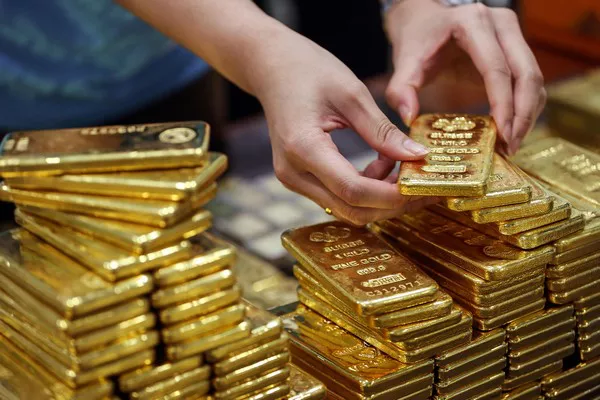Navigating the Path Ahead:
As we stand at the threshold of a new era, the outlook for the gold futures market beckons us with anticipation. In this exploration of expert predictions, we scrutinize the factors poised to shape the trajectory of gold futures in 2023 and beyond. The market’s landscape is dynamic, influenced by a tapestry of economic variables, geopolitical shifts, and investor sentiments.
1. Economic Factors Impacting Gold Futures
Interest Rates and Inflation Dynamics:
The nuanced relationship between interest rates and gold futures is a perennial focal point. Experts foresee that central banks’ decisions regarding interest rates will continue to play a pivotal role in shaping the direction of gold futures. Additionally, the specter of inflation looms large, with its potential impact on the appeal of gold as a hedge against eroding purchasing power.
Global Economic Recovery:
The post-pandemic era brings with it the challenges and opportunities of a global economic recovery. Analysts closely monitor indicators of economic health, including GDP growth, employment rates, and consumer spending. The pace and sustainability of the recovery will likely influence investor perceptions of risk, impacting demand for gold futures.
2. Geopolitical Dynamics and Market Sentiments
Geopolitical Tensions and Safe-Haven Demand:
Geopolitical tensions have historically driven investors to seek refuge in precious metals. As political landscapes evolve, analysts assess the potential impact of conflicts, trade disputes, and diplomatic relations on gold futures. The metal’s status as a safe-haven asset may experience fluctuations based on the ebb and flow of global tensions.
Market Sentiments and Speculative Activities:
The gold futures market is not immune to the currents of market sentiments and speculative activities. Behavioral factors, such as fear, greed, and herd mentality, can contribute to short-term volatility. Experts analyze these psychological aspects to gauge potential market movements and inform risk management strategies.
3. Technological Advancements and Market Innovations
Digital Transformation and Blockchain Integration:
The advent of technology introduces new dimensions to the gold futures market. Blockchain technology, in particular, holds promise for enhancing transparency, traceability, and efficiency in trading. As technological innovations unfold, market participants adapt to novel tools and platforms, influencing the market’s structure and accessibility.
Environmental, Social, and Governance (ESG) Considerations:
ESG considerations have gained prominence across financial markets. The gold futures market is no exception, as stakeholders increasingly scrutinize the environmental and social impact of mining operations. Shifts in investor preferences towards sustainable and responsible practices may influence the market’s dynamics.
4. Expert Predictions and Analyst Insights
Divergence in Forecasts:
The realm of expert predictions is characterized by a divergence of views. Analysts offer varied perspectives on the potential direction of gold futures. Some foresee bullish trends, driven by inflationary pressures and geopolitical uncertainties, while others emphasize the impact of economic fundamentals and interest rate dynamics.
Risk Management and Portfolio Diversification:
Amidst uncertainties, experts unanimously underscore the role of gold futures in risk management and portfolio diversification. The metal’s historical resilience during times of crisis and its potential to act as a counterbalance to traditional assets make it a valuable component in strategic investment portfolios.
Frequently Asked Questions
Q1: How do interest rates impact gold futures?
Interest Rate Sensitivity: Gold futures are sensitive to changes in interest rates. When interest rates rise, the opportunity cost of holding non-interest-bearing assets like gold increases, potentially dampening demand.
Q2: What role does inflation play in shaping the gold futures market?
Inflation Hedge: Gold is often considered a hedge against inflation. As inflation erodes the value of fiat currencies, investors may turn to gold as a store of value.
Q3: How can geopolitical tensions influence gold futures?
Safe-Haven Appeal: Geopolitical tensions tend to enhance gold’s safe-haven appeal. Investors seek the metal as a refuge during periods of uncertainty and geopolitical instability.
Q4: What technological advancements are impacting the gold futures market?
Blockchain Integration: Blockchain technology is making inroads into the gold futures market, offering benefits such as increased transparency, security, and efficiency in trade settlement.
Q5: How can investors navigate market volatility in gold futures?
Risk Management Strategies: To navigate volatility, investors can employ risk management strategies, including diversification, setting clear objectives, and staying informed about economic and geopolitical developments.
Q6: Are there any ethical considerations associated with gold futures investments?
ESG Factors: Environmental, social, and governance (ESG) considerations are gaining prominence. Investors may consider the ethical and sustainable practices of gold mining operations when making investment decisions.
Q7: What are the key factors analysts consider when making predictions about gold futures?
Interest Rates, Inflation, and Geopolitical Events: Analysts consider a range of factors, including interest rates, inflation dynamics, geopolitical events, and market sentiments, when making predictions about gold futures.
Q8: Is gold still a relevant asset for portfolio diversification?
Resilience and Portfolio Diversification: Yes, gold’s historical resilience during economic uncertainties and its ability to act as a diversification tool make it relevant for investors looking to balance risk in their portfolios.

